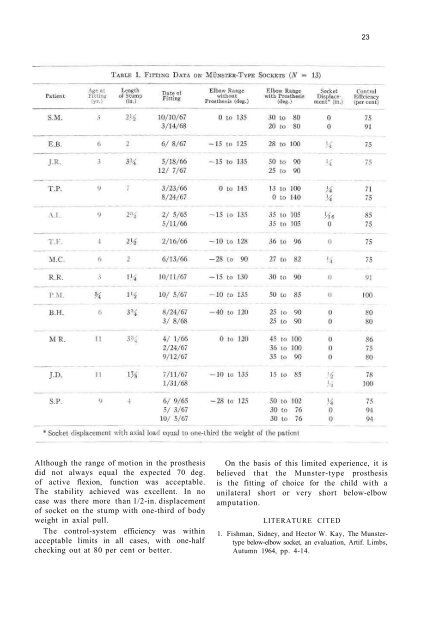Experience with the Munster-Type Below- Elbow Prosthesis, a ...
Experience with the Munster-Type Below- Elbow Prosthesis, a ...
Experience with the Munster-Type Below- Elbow Prosthesis, a ...
You also want an ePaper? Increase the reach of your titles
YUMPU automatically turns print PDFs into web optimized ePapers that Google loves.
23<br />
Although <strong>the</strong> range of motion in <strong>the</strong> pros<strong>the</strong>sis<br />
did not always equal <strong>the</strong> expected 70 deg.<br />
of active flexion, function was acceptable.<br />
The stability achieved was excellent. In no<br />
case was <strong>the</strong>re more than 1/2-in. displacement<br />
of socket on <strong>the</strong> stump <strong>with</strong> one-third of body<br />
weight in axial pull.<br />
The control-system efficiency was <strong>with</strong>in<br />
acceptable limits in all cases, <strong>with</strong> one-half<br />
checking out at 80 per cent or better.<br />
On <strong>the</strong> basis of this limited experience, it is<br />
believed that <strong>the</strong> <strong>Munster</strong>-type pros<strong>the</strong>sis<br />
is <strong>the</strong> fitting of choice for <strong>the</strong> child <strong>with</strong> a<br />
unilateral short or very short below-elbow<br />
amputation.<br />
LITERATURE CITED<br />
1. Fishman, Sidney, and Hector W. Kay, The <strong>Munster</strong>type<br />
below-elbow socket, an evaluation, Artif. Limbs,<br />
Autumn 1964, pp. 4-14.
















